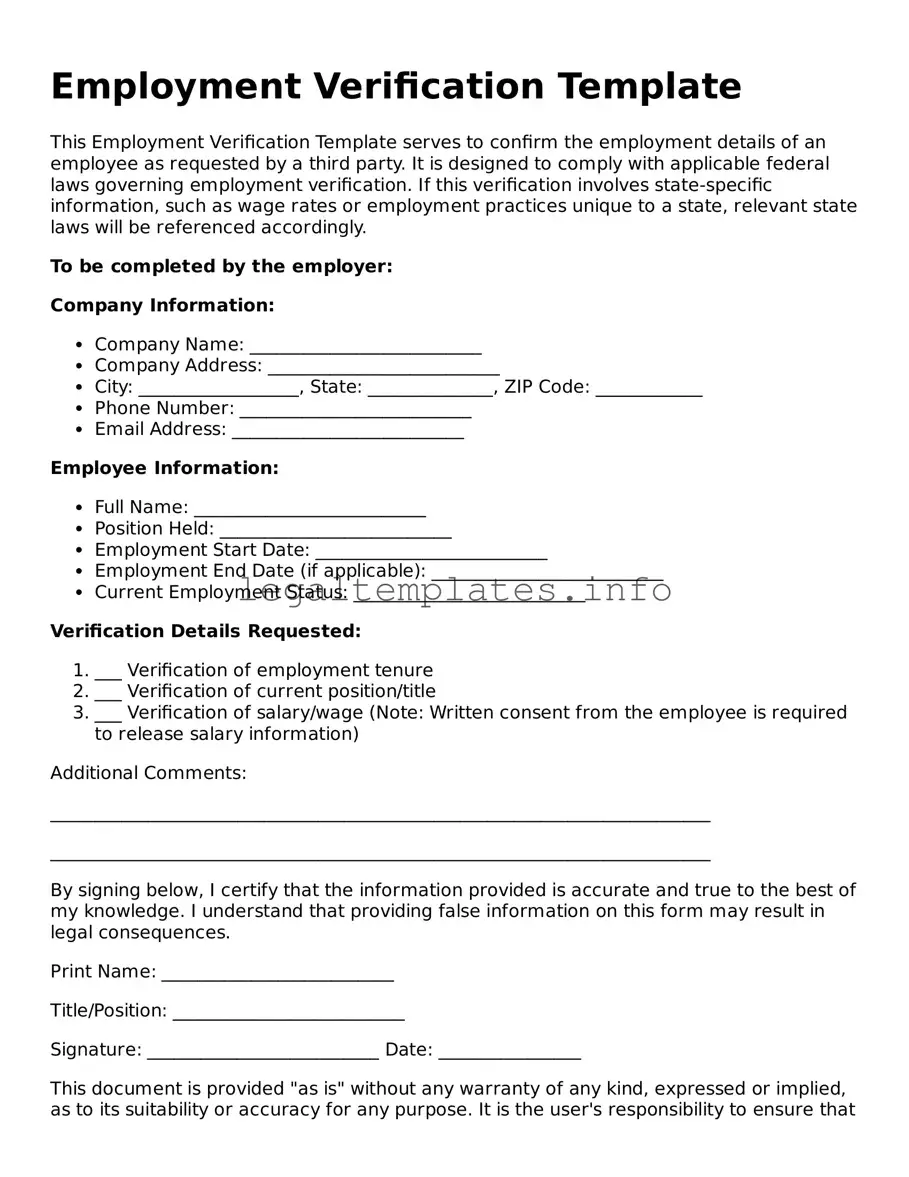What is an Employment Verification Form?
An Employment Verification Form is a document used by employers to confirm the employment status of current or former employees. This form provides essential details such as the employee's job title, dates of employment, and salary information. It is often requested by lenders, landlords, or future employers.
Who needs to fill out an Employment Verification Form?
This form is typically completed by the employer or a representative of the Human Resources department. The information should be provided in response to a request from an external party or the employee needing to verify their employment status for personal reasons.
How is the Employment Verification Form used?
The form is used to confirm an individual's employment history including job title, tenure, and salary. This verification can be crucial for financial or personal transactions where proof of employment and income is necessary, such as applying for a loan, securing a lease, or undergoing a background check for a new job.
What information is required on the Employment Verification Form?
The form requires identifying information about the employee, the employer's details, employment dates, position held, salary, and potentially the reason for termination if no longer employed. It may also ask for consent from the employee to release this information, depending on privacy laws.
Is the employee's consent needed to release information?
Yes, in most jurisdictions, it is necessary to obtain the employee's consent due to privacy laws. Employees should agree to the release of their employment details, especially when it comes to sensitive information such as salary. Written consent protects both the employer and employee from potential legal issues.
How long does it take to process an Employment Verification Form?
The processing time can vary based on the employer's policies and the method of verification. Digital requests and verifications might be completed within a few business days, whereas paper-based verifications might take longer. It's advisable for requesters to allow sufficient time for the employer to process the form.
What should I do if I find incorrect information on an Employment Verification Form?
If incorrect information is discovered on the form, it should be addressed immediately. The employee should contact their employer's HR department to correct any inaccuracies. Prompt resolution of errors ensures that all parties have accurate and up-to-date information.
Are there legal protections for employers who provide employment verification?
Yes, employers are generally protected by law when they provide truthful employment verification information in good faith. However, it's important for employers to be cautious and ensure that what they disclose is accurate and does not infringe on the employee's rights, to avoid potential legal complications.
